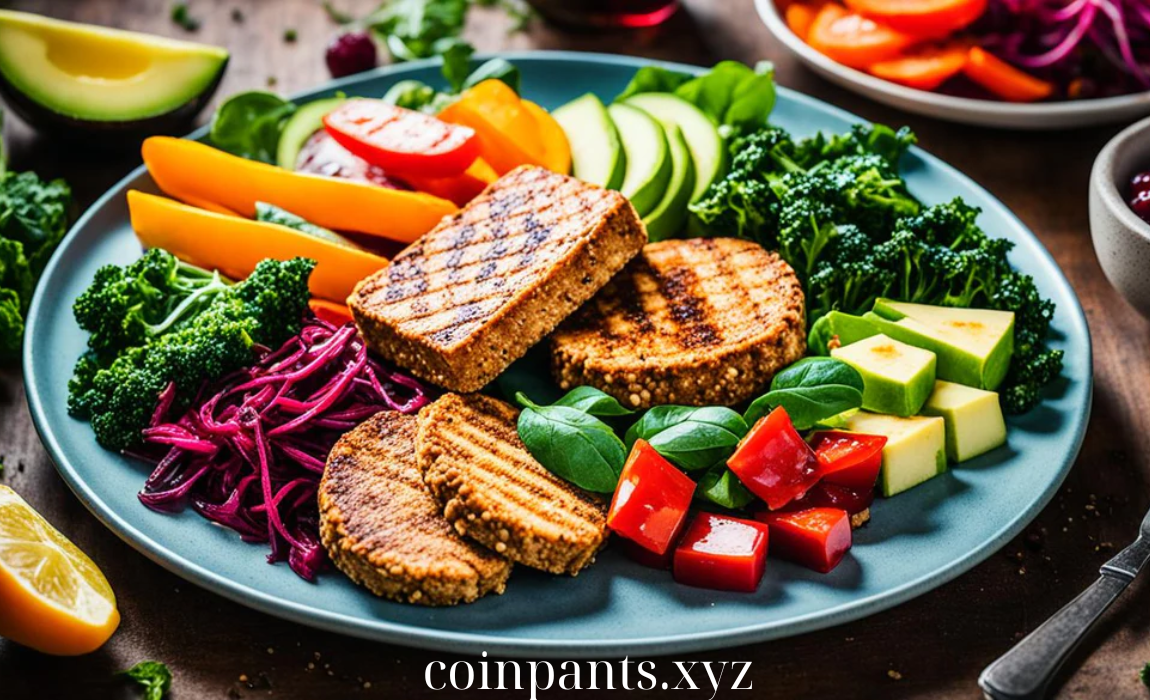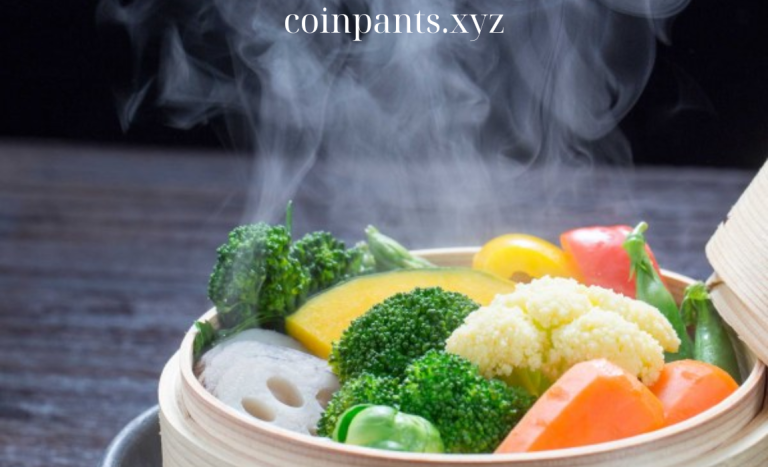
Plant-based cooking is all about finding the right balance of flavors to turn simple ingredients into extraordinary meals. Whether you are preparing a casual lunch or a gourmet dinner, understanding the best flavor combinations for plant-based recipes can transform a dish from ordinary to exceptional. By blending bold spices, tangy fruits, earthy vegetables, and rich textures, plant-based meals can deliver both depth and complexity, ensuring every bite is satisfying.
In this guide, we’ll explore the most effective flavor combinations for plant-based recipes that add a burst of taste and richness, from umami-packed profiles to sweet-and-spicy contrasts. Let these combinations inspire your next plant-based dish!
1. Umami Powerhouse: Mushrooms, Soy Sauce, and Miso
One of the most essential flavor combinations for plant-based recipes is built around umami—a savory, rich taste typically found in meat-based dishes. However, plant-based cooks can easily replicate umami using ingredients like mushrooms, soy sauce, and miso. This trio is the foundation for savory, hearty dishes that can satisfy even the most die-hard meat lovers.
- Flavor combination:
- Mushrooms + soy sauce + miso: The earthy, meaty texture of mushrooms combined with the saltiness of soy sauce and the depth of miso creates a flavor explosion that’s perfect for enhancing soups, stir-fries, or plant-based burgers.
- How to use it:
- Sauté mushrooms in soy sauce and stir in miso paste to create a rich broth for ramen or a flavorful base for a plant-based gravy.
- This combination also works wonderfully as a filling for dumplings, spring rolls, or as a topping for grain bowls.
Tip: Add a touch of nutritional yeast to boost the umami factor while introducing a cheesy flavor, perfect for dishes like mushroom risotto or pasta.
2. Bright and Tangy: Lemon, Tahini, and Garlic
For those looking to bring a fresh, zesty punch to their meals, the combination of lemon, tahini, and garlic offers a perfect balance of creamy, tangy, and aromatic flavors. This is one of the most versatile flavor combinations for plant-based recipes, ideal for Middle Eastern and Mediterranean-inspired dishes.
- Flavor combination:
- Lemon + tahini + garlic: The tang of lemon juice, the creaminess of tahini (a sesame seed paste), and the boldness of garlic come together to form a rich, multi-layered flavor that’s both comforting and refreshing.
- How to use it:
- Create a creamy lemon-tahini dressing to drizzle over roasted cauliflower or toss with leafy greens and quinoa.
- Use it as a dip for fresh vegetables, pita chips, or falafel for a delightful, healthful snack or appetizer.
Tip: For a spicier twist, add a pinch of cayenne pepper or a splash of hot sauce to the dressing, and pair it with roasted sweet potatoes or chickpeas.
3. Sweet and Spicy Fusion: Mango, Chili, and Lime
When it comes to exciting flavor combinations for plant-based recipes, few can beat the mango, chili, and lime trio for its refreshing yet fiery balance. This combination adds both sweetness and heat to dishes, providing a tropical kick to salads, tacos, and salsas.
- Flavor combination:
- Mango + chili + lime: The sweetness of ripe mango pairs perfectly with the heat of chili and the tanginess of lime juice, creating a flavor profile that is ideal for summer dishes or refreshing snacks.
- How to use it:
- Add chopped mango, chili flakes, and lime juice to a red cabbage slaw for a refreshing and vibrant taco topping.
- Create a tropical salsa with this combination and serve it alongside grilled plant-based proteins like tofu, tempeh, or seitan.
Tip: Garnish the dish with fresh cilantro and crushed peanuts to add texture and extra layers of flavor. This combination also works great with roasted vegetables, like carrots or squash.
4. Earthy and Sweet: Beets, Orange, and Balsamic Vinegar
Root vegetables like beets bring an earthy sweetness to the table, and when combined with the citrusy brightness of orange and the tangy depth of balsamic vinegar, this combination elevates salads, roasted dishes, and grain bowls. This trio is a fantastic example of flavor combinations for plant-based recipes that balance sweet, sour, and earthy notes.
- Flavor combination:
- Beets + orange + balsamic vinegar: Roasted beets, fresh orange segments, and a drizzle of balsamic vinegar create a harmonious mix of flavors and textures, perfect for salads or grain-based dishes.
- How to use it:
- Toss roasted beets with a citrus vinaigrette made from freshly squeezed orange juice, olive oil, and balsamic vinegar for a refreshing salad.
- Serve this combination over a bed of arugula, quinoa, or farro, adding a sprinkle of toasted nuts or seeds for crunch.
Tip: For added complexity, finish the dish with a sprinkle of vegan feta or a handful of pomegranate seeds for extra sweetness and color.
5. Creamy and Herbaceous: Avocado, Basil, and Olive Oil
When you’re looking for flavor combinations for plant-based recipes that bring richness and freshness, the combination of avocado, basil, and olive oil is ideal. This trio adds creamy texture with a bright herbal note, perfect for enhancing salads, pasta, and even toast.
- Flavor combination:
- Avocado + basil + olive oil: The richness of avocado combined with the peppery freshness of basil and the smoothness of olive oil creates a luxurious base for plant-based dishes.
- How to use it:
- Blend avocado, fresh basil, olive oil, and lemon juice to create a creamy dressing for pasta or grain bowls.
- Use this combination as a topping for avocado toast, adding tomatoes and chili flakes for an extra burst of flavor.
Tip: For a more robust flavor, add garlic and nutritional yeast to the dressing, making it perfect for plant-based pesto or as a sauce for zucchini noodles.
6. Smoky and Sweet: Sweet Potatoes, Smoked Paprika, and Maple Syrup
The combination of sweet potatoes, smoked paprika, and maple syrup is a prime example of how to balance sweetness with smokiness in plant-based dishes. This flavorful trio is ideal for fall or winter meals, providing comfort with a hint of spice.
- Flavor combination:
- Sweet potatoes + smoked paprika + maple syrup: Roasting sweet potatoes with smoked paprika and maple syrup creates a rich, caramelized flavor with smoky undertones, perfect for adding warmth to your dishes.
- How to use it:
- Roast cubed sweet potatoes tossed in olive oil, smoked paprika, and a drizzle of maple syrup until caramelized. Serve as a side dish or in grain bowls with black beans and avocado.
- Use this combination to fill tacos or burritos, pairing the smoky sweetness with spicy salsa and fresh guacamole.
Tip: Add a sprinkle of toasted pumpkin seeds for extra texture, or garnish with lime zest to balance out the sweetness.
7. Fresh and Zesty: Cucumber, Mint, and Lime
When freshness is key, few flavor combinations for plant-based recipes are as invigorating as cucumber, mint, and lime. This combination adds a cooling effect to spicy dishes or can serve as a refreshing palate cleanser between courses.
- Flavor combination:
- Cucumber + mint + lime: The crispness of cucumber paired with fragrant mint and zesty lime creates a light and refreshing flavor, perfect for summer meals or drinks.
- How to use it:
- Toss sliced cucumber with fresh mint and lime juice to make a refreshing side salad or a topping for falafel wraps and grain bowls.
- Use this combination to create a cucumber-mint salsa, ideal for serving with spicy tacos or alongside grilled vegetables.
Tip: For a unique twist, add a pinch of sumac or chili powder to enhance the flavor profile, making it an ideal accompaniment to Mediterranean dishes.
Conclusion: Mastering Flavor Combinations for Plant-Based Recipes
Mastering flavor combinations for plant-based recipes allows you to explore a world of culinary possibilities. By pairing complementary flavors such as umami-rich mushrooms with soy sauce, sweet mango with spicy chili, or earthy beets with tangy orange, you can elevate even the simplest ingredients into gourmet dishes. Whether you’re looking to craft a vibrant salad, a comforting stew, or an exciting taco filling, these flavor combinations will inspire and guide your plant-based cooking journey.






